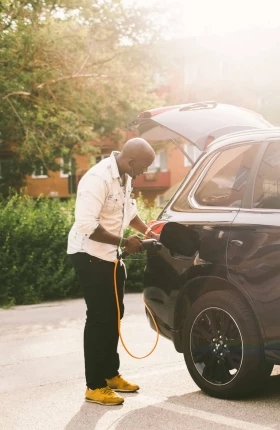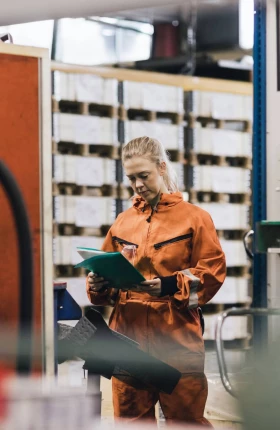Among the most encouraging outcomes of international climate action in 2022 was the big step forward in partnerships to accelerate what’s known as the “just energy transition .” We saw developed nations as well as multilateral lending institutions commit to providing financial and technical support to help low-income nations decarbonize—while also taking a critical step toward addressing their complex, real-world needs and challenges.
One of the most exciting announcements was the Just Energy Transition Partnership (JETP) for Indonesia, which followed a similar announcement for South Africa at COP26. A group of nations led by the US and Japan committed to mobilizing $20 billion in public and private resources to speed up the shift from coal to renewable energy sources. Right now, renewable energy accounts for 11.5% of Indonesia’s power generation, but the JETP’s target is to push that up to 34% by 2030. The JETP also aims to accelerate the decommissioning of coal plants in Indonesia. That’s no mean feat in a rapidly industrializing country with a growing population of nearly 280 million and where 60% of energy comes from coal, much of it mined domestically.
Shutting down coal plants that still have useful lives comes with a host of complex considerations. A typical coal plant has a lifetime of 40 to 50 years; many of those in Southeast Asia have been built within the past decade. Early retirement means utilities have to write off an asset and address financial commitments to investors who provided capital based on expected returns over a long period of time. Utilities may also need to invest in lower-carbon sources to replace the coal-fired power, driving up costs further. Finally, you have to consider the job impact along the coal value chain—from mining to power generation—and the potential knock-on effects of unemployment on the broader economy, such as consumer spending and tax revenues.
A typical coal plant has a lifetime of 40 to 50 years; many of those in Southeast Asia have been built within the past decade. Early retirement means utilities have to write off an asset and address financial commitments to investors who provided capital based on expected returns over a long period of time.
These are all challenging problems, especially in developing nations, where electricity consumption is still increasing in line with economic growth and industrialization, and where governments want to keep electricity affordable.
On top of this, while many investors are interested in breakthrough green technologies such as clean hydrogen and direct air capture, we haven’t seen as many funding mechanisms to cushion the impact of early coal retirement. If governments have to pay for all the costs of writing off coal assets, they’ll stretch finances that may not be strong to begin with. The alternative is to pass the costs on to everyday consumers, who may not be able to afford it.
These are some of the reasons why new international partnerships for funding and managing a just transition are so critical. The Asian Development Bank, for example, is working with the state-owned utility Perusahaan Listrik Negara (PLN), power producer Cirebon Electric Power, and the Indonesian government to explore the early retirement of its 660-megawatt Cirebon coal-fired power plant and replacing it with renewables and other lower-carbon sources. The initiative also calls for measures to mitigate the impact on around 200 workers who will be displaced and on their communities. In November 2022, PLN also secured $750 million from eight international banks for the energy transition, highlighting the critical role of the private sector alongside governments and development institutions.
We’re seeing a similar push to decarbonize the power sector elsewhere in Southeast Asia, where resolve to fight climate change has stiffened. Many countries that have seen the real impact of rising sea levels and severe weather in recent years have set net-zero targets.
The Sustainable Advantage: Insights on Creating Competitive Advantage Through Sustainability
In the Philippines, for example, AC Energy has committed to retiring a 270-megawatt coal plant in 2040—15 years early—through an energy transition funding scheme arranged with domestic financial institutions. The country’s largest distribution utility, Meralco, also plans for its generation arm to be coal-free after 2040 and is collaborating with First Philec, one of Southeast Asia’s largest transformer manufacturers, to decarbonize the grid.
What’s happening in Malaysia is also interesting. Tenaga Nasional Berhad, the nation’s largest utility, announced it will phase out coal plants and repower them with combined-cycle gas turbines that are capable of running on green hydrogen or have carbon capture and storage facilities. As an example of the efforts being made, Tenaga has announced a partnership with Petronas, the national oil company, to develop the national green hydrogen ecosystem. By 2035, Tenaga aims to have green hydrogen account for 30% of the fuel firing a 1,400-megawatt power plant in Terengganu.
Much remains unclear about the JETP’s specific mechanisms and how all of the $20 billion will be used. But initiatives such as these show how the climate and energy crises have stimulated exciting new partnerships. These partnerships are starting to mobilize the huge investments needed to address the “ energy trilemma”—the challenge of balancing energy decarbonization, security, and affordability—while acknowledging the complexities of the green energy transition in the developing world.









